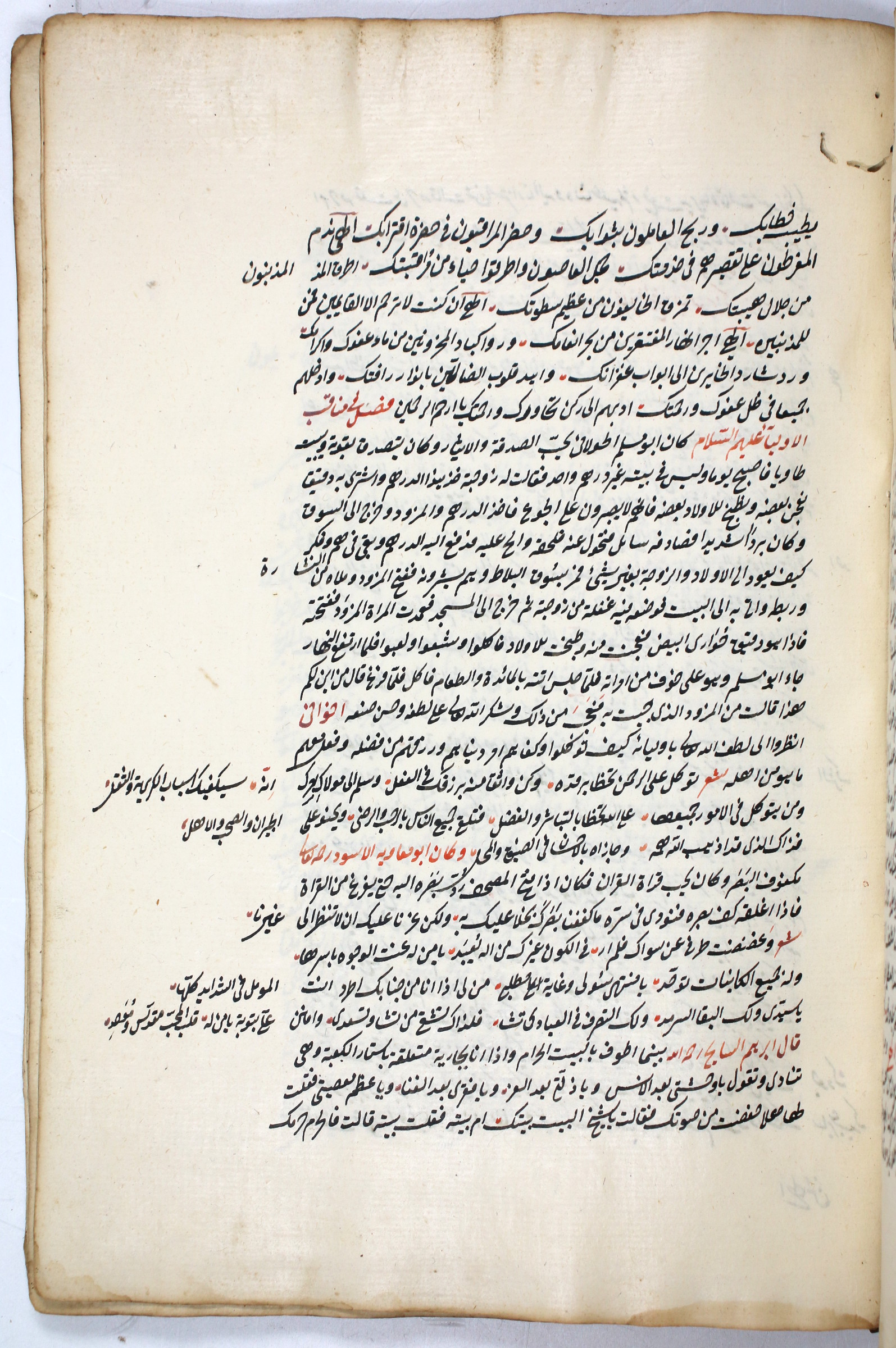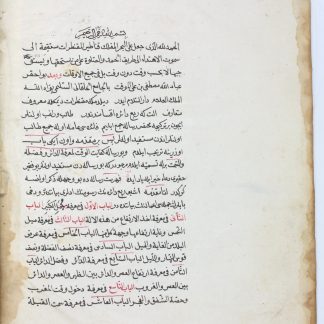Female Sufi teachers
Al-Rawdah Al-Fa'iq of Sermons and Preachers.
Folio (210 x 304 mm). 64 ff., 2 ff. of which are left blank in the centre of the manuscript. Arabic manuscript on polished and watermarked rag paper. Black script with important words and phrases picked out in red. Early or contemporary limp brown leather.
€ 8.500,00
Teaching and preaching Islam: this anthology of sermons and religious devotions is notable for its inclusion of stories about women preaching to men on matters of religion. The collection is the work of an Egyptian Sufi ascetic named Shu'ayb al-Hurayfish (d. 1398 CE), who was himself a preacher; his work has been analysed by modern experts in order to glean a better understanding of the Muslim preaching traditions in al-Hurayfish's Egypt.
Unlike many of his contemporaries, such as the famous Ibn al-Hajj (ca. 1250-1336 CE), al-Hurayfish did not go out of his way to condemn women who preached freely to mixed audiences. Instead, in al-Hurayfish's work, women may give private audiences to one or more male listeners, to whom they dispense wisdom. This occurs within the specific confines of a culturally acceptable religious activity: that of a private space and within the practice of the Sufi siyaha, or "spiritual wandering", which was central to Sufi religious practice, but nevertheless shows a marked departure from other contemporary views. Al-Hurayfish's stories tell, for example, of a devout Sufi woman who improvises powerful speeches to a male listener. At times in the text the man asks her to speak, and at others she lectures of her own volition to her willing audience.
This manuscript copy is quite an early example, and is written on watermarked Ottoman laid paper which can be dated to the first half of the 17th century; despite its historical importance, manuscripts of this work are rare, and fewer still can be dated prior to 1700 CE.
With the ownership inscription of Guruscuzade Haci Ahmet Aga; a man by this name owned a library in Ottoman Bulgaria in the 17th century.
Leather lightly rubbed; signs of previous careful trimming of the text block (a flap has been created for a marginal note, which appears to have been unnecessary, as margins remain wide). With only a few marginal dampstains, quite well preserved.
GAL II, 177f. Asparouh Velkov, Les filigranes dans les documents Ottomans: divers types d'images (Stoyan Shivarov, 2005), pp. 7 and 108-115.

















